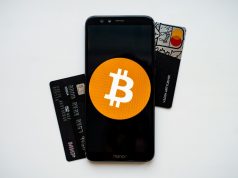When talking about renewable energy in the context of solar energy, we are referring to something long-lasting, simple to use, and demands minimal maintenance. The sun is an energy source that hopefully will not run dry with time. Hence allowing the usage of its effects to produce electricity without needing to recharge or replace them.
Contact a utility bidder if you want to establish an environmentally sustainable enterprise. They will present you with the greatest available solutions as they are experts in renewable energy.
Fossil fuel is the absolute antithesis of renewable energy. Fossil fuels are not sustainable since they demand continual refueling and administration. They are nonrenewable and will deplete over time. They are also environmentally unfriendly due to carbon emissions, damaging the air, vegetation, and planet.
The history behind the usage of Solar Power
We all are aware that humankind has been utilizing solar power since the seventh century B.C. This information is based on what historians have recorded over time. Humans have always been known to have a close relationship with natural energy resources, mainly solar power.
All of it was possible because of the sun, from concentrating sunlight on a glass to ignite a fire to redirecting sunshine via mirrors to illuminate a space. However, it was the inventiveness of the following five scientists between 1839 and 1883 who made the theory of capturing solar electricity via PV cells a reality:
- A French physicist Edmond Becquerel first uncovered the influence of photovoltaics in 1893. He noticed that the cells generated more power when exposed to light.
- The use of selenium as photoconductors was first suggested by Willoughby Smith in 1873.
- In 1876 Richards Evans Day and William Grylls Adam were the first two people to have put the two concepts mentioned above into an experiment. They applied Becquerel’s photovoltaic theory to selenium. It was hence discovered that selenium was capable of producing electricity when exposed to light.
- The American inventor Charles Fritz hence built the first functioning selenium solar cell in 1883.
How can you save up by using Solar Energy?
The short and simple answer to this is that it entirely depends on you and your requirements. The quantity of funds you can save from solar power depends on the following factors;
- The building size
- The number of people
- Amount of electricity used each month
- The surface area of the solar panel system
- Exposure to direct sunlight
- Incentives accessible in one’s area
- Category of the solar contract you register and many more.
An electric vehicle charger and a solar battery work well with solar panel systems. This can have a significant impact on the quality of life.
Photovoltaic panels send surplus energy back to the main power grid as it functions for you, possibly saving up on the utility bills. However, a part of this surplus energy can be stored in a solar battery. The solar battery functions to store energy for times when you need it the most. Such as during a power breakdown or at night when there is no sunlight.








